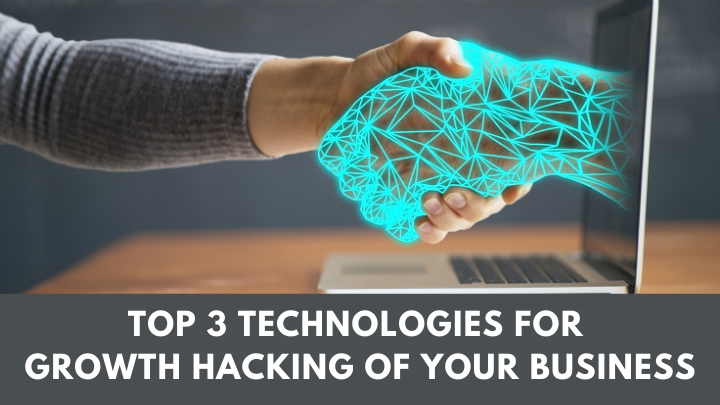Top 3 latest technologies to use for your successful business.

Since the pandemic struck early last year, many companies and organizations worldwide had to adapt by virtualizing their operations and bringing in automation systems. The increased demand for new technologies has led to a faster rate of their adoption in different industries. Our daily and professional life has undergone a huge change. It had been a huge paradigm shift in the society.
Robots now sort and pack retail orders and work as chefs or cashiers. Artificial intelligence (AI) systems are used to streamline processes such as fraud detection and information technology (IT) support. Augmented reality (AR) and virtual reality (VR) prove themselves useful in remote employee training. Here’s a list top 3 technologies to use for growth hacking of your business.
Automation:
The pandemic has prompted an automation invasion. Due to the need to comply with social distancing protocols, many companies have begun to assign robots and AI systems to accomplish simple and repetitive tasks. For example, online retail giant Amazon is known for having robots working in its warehouse. Fast-food chains are also beginning to hire robots to work as chefs and cashiers.
This keeps human workers out of harm’s way and helps business owners cut costs – they won’t have to pay for employee benefits such as healthcare if the employee in question is a robot or computer. Delegating the “dull, dirty, and dangerous” tasks to automation systems also allows human workers to work on more complicated and more important tasks.
AI systems are for automating certain workflows and business processes for the same purpose – for increased speed and efficiency and to keep human workers focused on more important tasks. AI also features machine learning (ML), the system’s ability to learn from actions, patterns, and data to improve its knowledge and ability to make decisions. Here are a few examples of how businesses use AI.
Automated customer service. Ask any customer or client what their biggest turn-off is, and they’re likely to say poor customer service. Automating customer service will help speed up your customer interactions, helping you avoid accumulating a long list of customers who haven’t yet had their concerns addressed. An example of automated customer service is chatbots that you can use on your company website and Facebook page.
HR. HR employees spend much of their time doing tasks that ought to be automated. AI software can track employee time management, leave requests, payroll, and employee benefits. Automating such tasks ensures that the HR workers can offer support and guidance to the company’s staff.
IT automation. If your IT guy doesn’t work in-house and comes in when he needs to, that can often mean a certain wait time to get to your office. Having a cloud-based IT service is not only more convenient, but it’s also faster and more efficient. Machine learning also enables the system to keep similar crises from reoccurring in the future.
Cloud services:
These make data and inventories accessible whenever and wherever we want. Cloud storage platforms such as Google Drive and Microsoft OneDrive make it possible for companies and organizations to keep documents and other file formats stored in a secure drive that they can access even on their mobile phones.
Apart from storage, the cloud also streamlines team collaboration and bookkeeping. Team collaboration programs such as Slack, Asana, and Microsoft Teams allow companies to communicate and work on projects. These have been particularly useful since the pandemic forced businesses and organizations to virtualize their operations and work remotely. Cloud-based bookkeeping platforms such as QuickBooks help small business owners to track their company’s expenses and use the data to create financial reports and projections.
VR and AR:
Augmented reality (AR) combines real-world elements with virtual ones. Virtual reality (VR), on the other hand, creates and displays virtual environments. Both technologies give users immersive and interactive experiences. This is why these technologies are often more associated with entertainment uses. Companies sometimes use AR filters on social media platforms such as Instagram and Snapchat as part of their marketing campaigns.
Apart from entertainment uses, AR and VR are actually also being used to help train athletes and medical students. AR creates simulations of operating rooms and helps young doctors-in-training work on their skills and knowledge at a safe distance from COVID-infested medical centers. If AR can do that for medical students and athletes, it should also be able to do the same for other workforces.
With the need to virtualize their operations, companies and organizations streamline their business processes with new technologies. This allows for faster and more efficient work while human workers can focus on more important tasks.
